Gorgeous weeds and walls at the Wildflower Center
With a hat tip to Phoenix landscape architect Steve Martino, who coined the phrase “weeds and walls” to describe his design style — planting native plants for toughness and building walls for structure — here are some of the beautiful weeds and walls at Austin’s own native-plant showcase, the Lady Bird Johnson Wildflower Center. I visited yesterday to see the early spring show, like gray globemallow (Sphaeralcea incana).
Native trees are at peak bloom all over town, and the Wildflower Center was colorful with Texas redbuds (Cercis canadensis var. texensis)…
…grape Kool-Aid-scented Texas mountain laurel (Sophora secundiflora)…
…and Mexican plum (Prunus mexicana).
The entry gardens are framed with fabulous stone walls that reference the architecture of Texas’s Spanish missions and German settler homesteads. This one contains a zigzagging sluice for recirculating water to spill into a pond.
Two red-eared slider turtles, including a baby turtle resting its head on the back of another’s shell, were basking on a rock, enjoying the warm spring sunshine.
Arched and linteled walls frame a long view to a window.
In the central plaza, a spiraling cistern tower (yes, it collects and stores rainwater) is the signature building of the Center. The cafe’s rooftop seating offers a place to enjoy the view, but you can also climb all the way to the top of the tower for sweeping views of the surrounding landscape.
This wall extends from the cafe and used to contain a dripping water feature in the stone window, which supplied a narrow trough of water below. I just noticed yesterday that the water feature is gone, and the trough is now filled with plants. I wonder what instigated the change?
Golden groundsel (Packera obovata) grows at the base of the tower — and was in bloom throughout the gardens.
In the children’s Little House garden, Carolina jessamine (Gelsemium sempervirens) swathed a coyote fence in fragrant yellow blossoms.
Inhale…and ahhhh
Limestone walls mark the entrance to the demonstration gardens, where a flowering Texas redbud arches toward the light.
Blazing orange California poppies (Eschscholzia californica) add hot color to a gray-green cactus bed.
At another pond near the butterfly garden, I stopped to admire this Roger Foster “ocular” sculpture, carved from native limestone. Foster’s sculptures are currently on display throughout the garden, but you may remember seeing one in Lee/The Grackle‘s garden too (click for my tour of Lee’s East Austin garden).
It’s been almost a year since the new family garden opened to the public, and I enjoyed seeing how the plants have grown. This silver-blue bed contains ‘Blue Ice’ Arizona cypress (Cuppressus arizonica var. glabra) and Wheeler’s sotol (Dasylirion wheeleri). Nice, but wouldn’t it be fun to see a smattering of California poppies in here to liven things up in spring? Or ground-covering winecup?
Walls of massive limestone blocks build up raised beds of sky-reaching yuccas and create “pictograph”-adorned tunnels and caves for children to explore.
Spanish bayonet (Yucca faxoniana), I think
Caves beckon youngsters to explore behind a waterfall.
Bronze sculptures of animals are placed throughout the family garden, including this one I hadn’t noticed before.
Water collection is an important feature at the Wildflower Center. I love these galvanized-steel cisterns — so handsome. A rain garden around it collects the overflow.
If you haven’t been to the Wildflower Center lately, or ever, it’s well worth a visit. In another few weeks, wildflowers will be at peak bloom, including bluebonnets, but the WC has a lot more going on than just wildflowers. It’ll teach you to love our native Texas “weeds.” And the walls aren’t bad either.
__________________
I’d love to have your vote in the Better Homes and Gardens 2015 Blogger Awards. Skip through to the Gardening category, select Digging, and then skip to the last page for your vote to be counted. You can vote as much as you like. Thanks for your support!
All material © 2006-2015 by Pam Penick for Digging. Unauthorized reproduction prohibited.


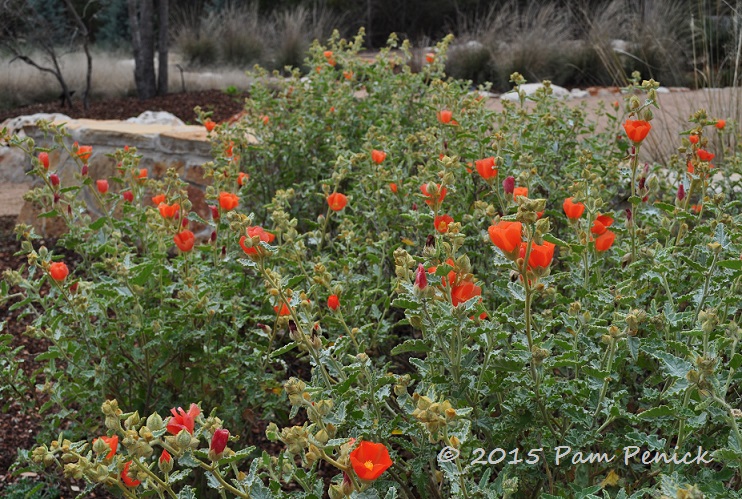
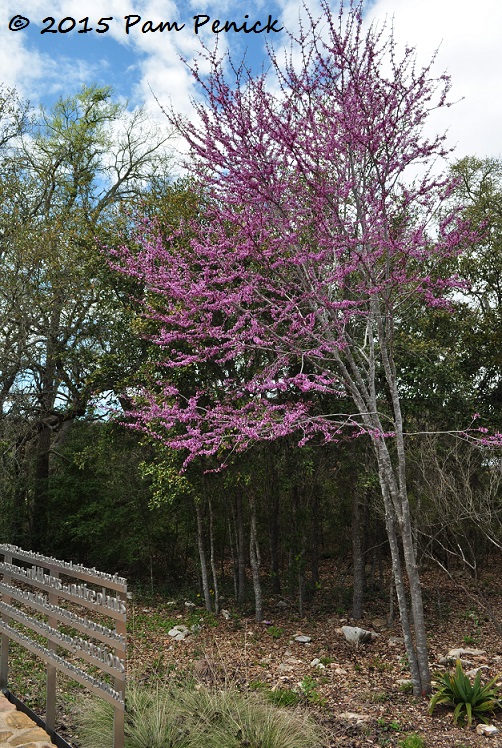
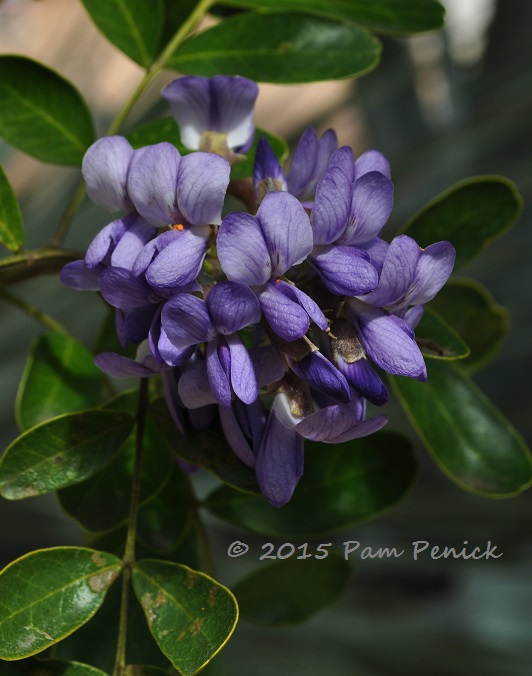
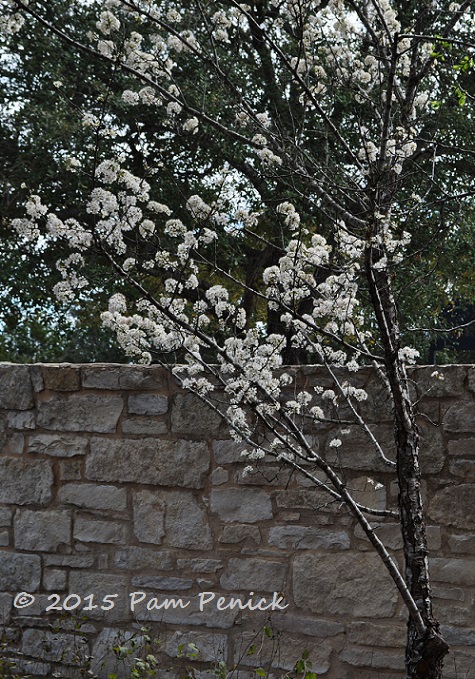
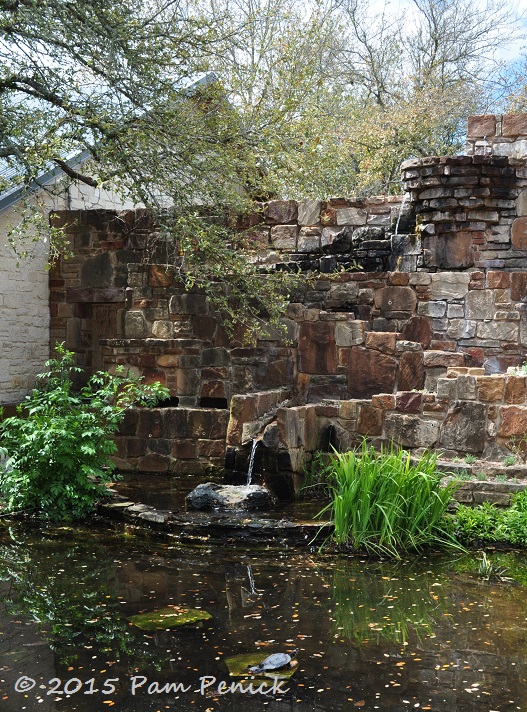
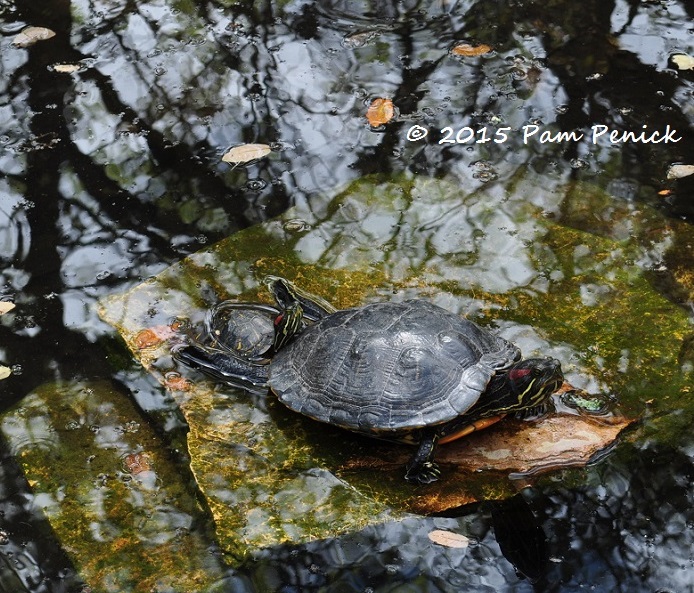
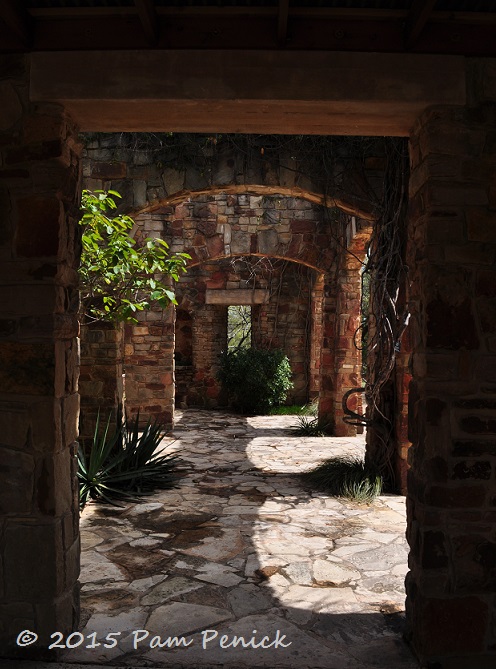
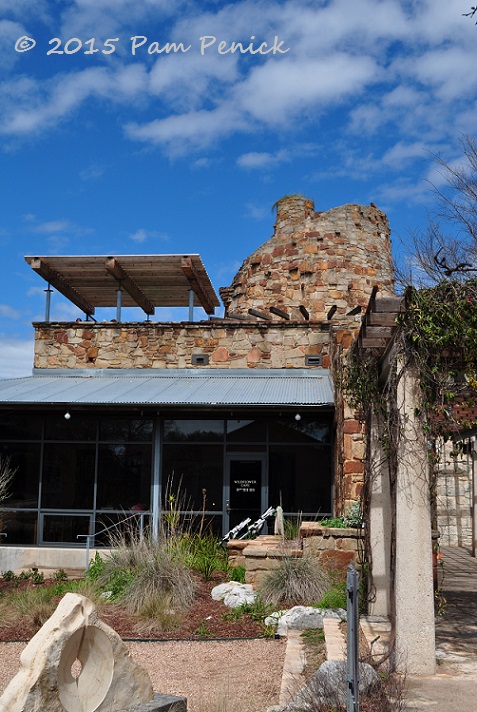
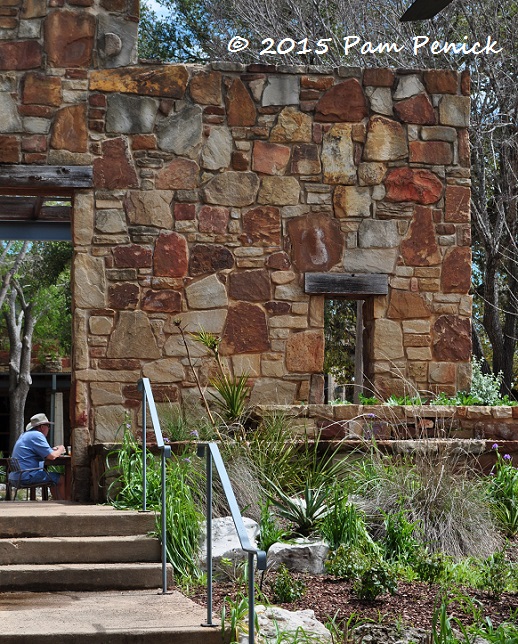
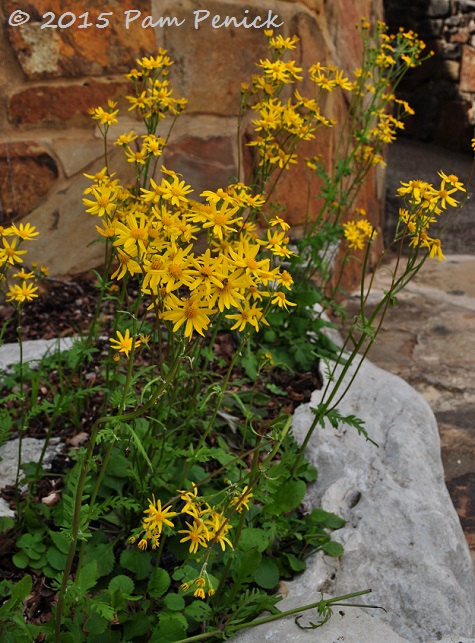
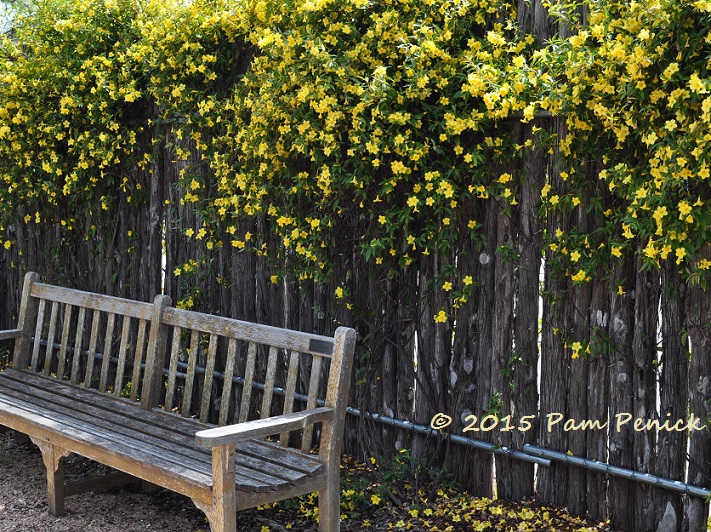
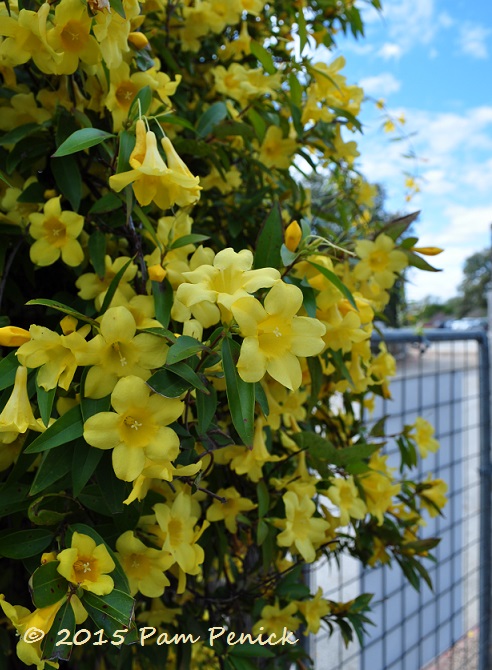
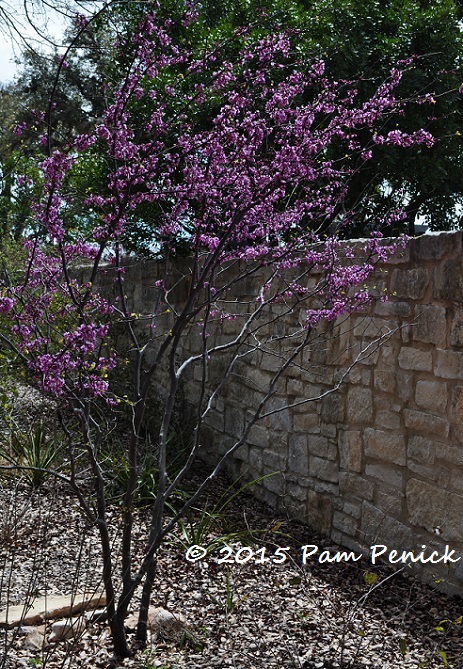
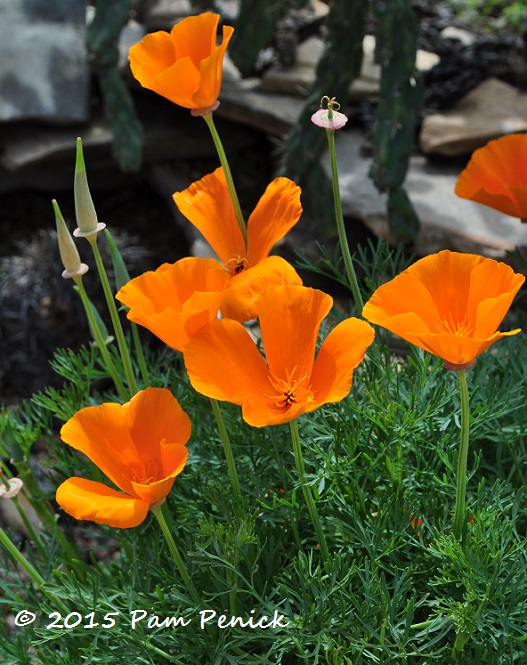
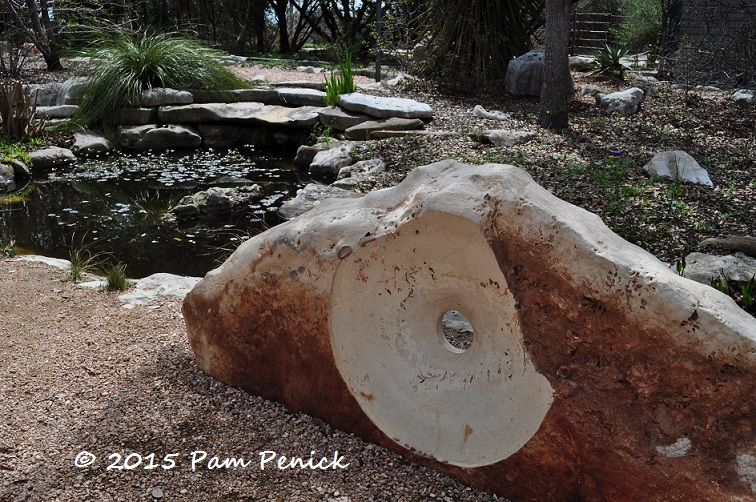
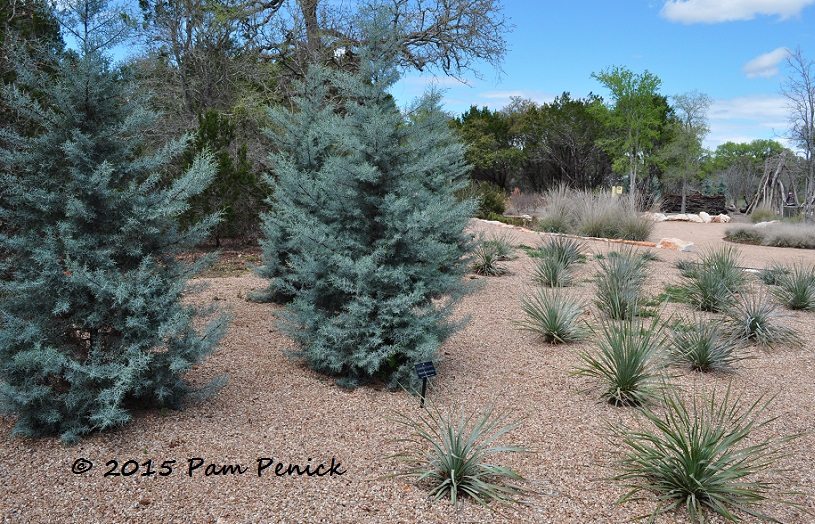
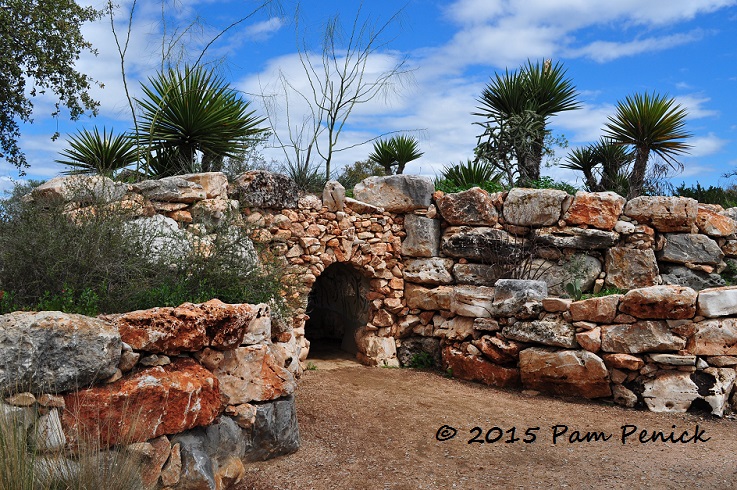
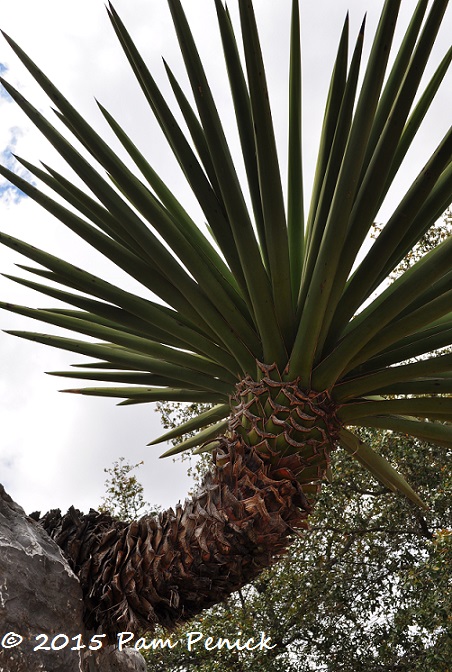
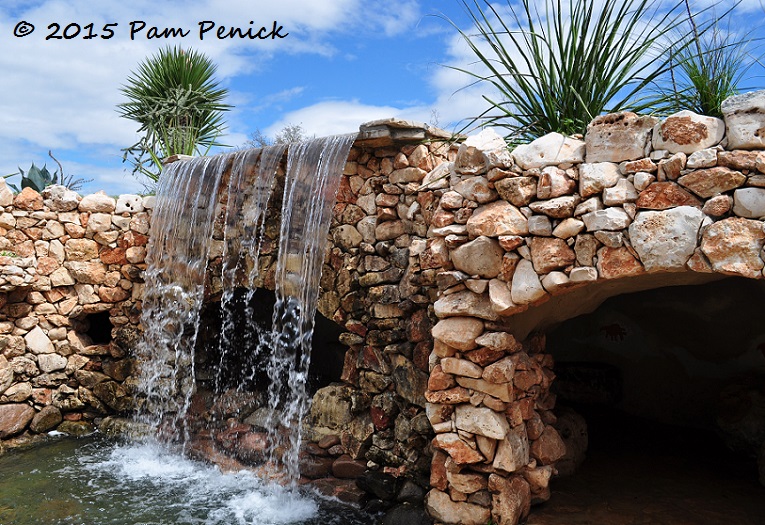
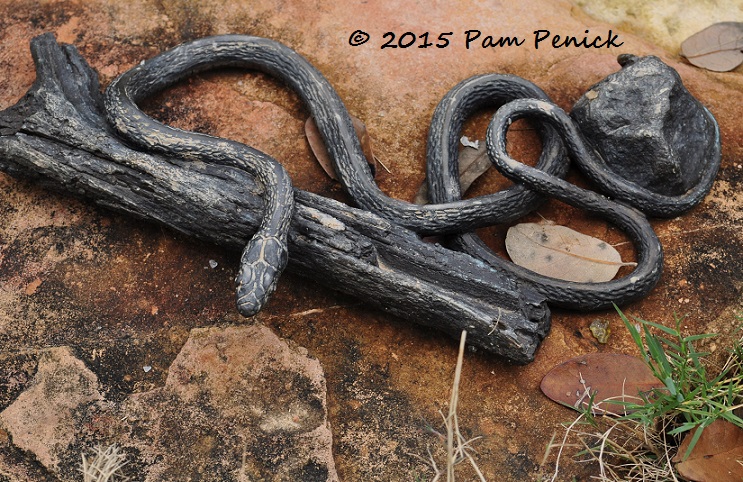
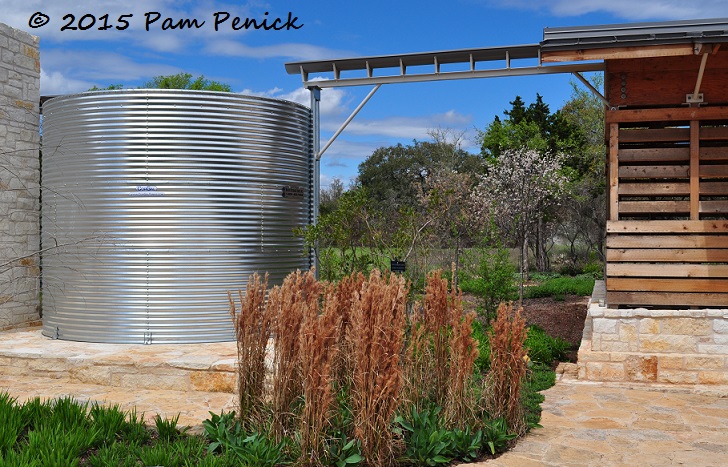
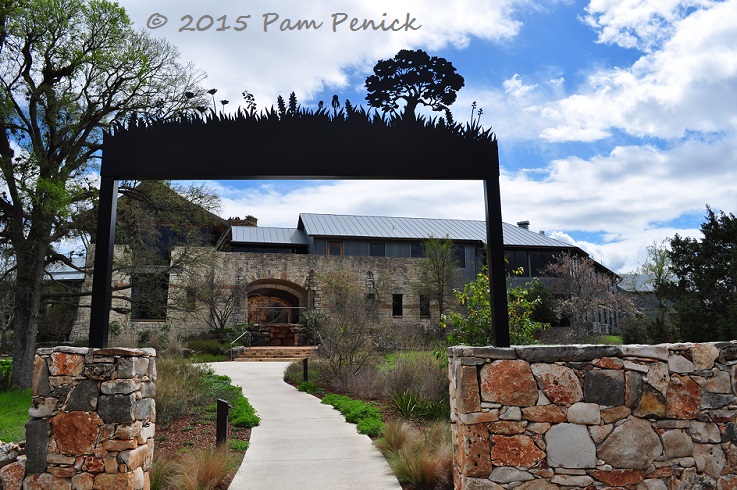
I’ve been wanting to get there. Now I REALLY want to get there. Hoping for good light next Monday. Thanks for the post.
I think it’s only going to get prettier and more flowery from now through May, Marilyn. Enjoy your visit! —Pam
Carolina Jessamine and Redbuds blooming – sure looks like spring there! I must say, though, that those turtles really steal the show! I do love the Blue Ice Cypress. I had some in my North Carolina garden. Now that I’m near Boston, I am right on the edge of the zone for them, but I’d love to try growing them here anyway if I can find any at the nurseries.
I had no idea they’d grow so far north, Indie. They are lovely, and especially here, where we have so few conifers that do well. —Pam
This is such a beautiful place. I never tire of your photos of the place. I hope to see it sometime.
One day I hope to help bring the Fling back to Austin, Lisa. Maybe you’ll be able to come see it then. —Pam
It’s a beautiful garden but that snake sculpture spooked me – I thought it was real at first!
Sorry, Kris! It’s a little one though, and even if real wouldn’t be very scary. 🙂 —Pam
Hi Pam,
Do CA poppies do well here in TX? Are they well adapted? Haha… I know I’m nitpicking when thinking of what’s “Native”-native. A border is just a border is just a border (though some might disagree!), and plants have their very own borders.
On a side note – your recent posts about owls have made me think about my beautiful bat habitat from BCI which I am yet to put up. I tried calling up BCI for help, but without much luck. I will try again, but am wondering if you might know someone via your work who can give me some sound advice about the best place to position a bat house in the backyard… I have specific questions that go beyond general information. Do you know anyone who would be willing to share their knowledge?
Kind regards!
Kapila
Kapila, this is a good question about the California poppies. The Wildflower Center only grows plants that are native to Texas (or so they say), so I assume this poppy is native at least to West Texas. It would be an excellent question for the Center’s Mr. Smarty Plants! I’ve never grown it myself, but it seems to appreciate the gravelly, cactus-friendly soil and full sun that I saw it growing in. Update: The WC does list it as native to West Texas.
Re: the bats, I’m afraid I know almost nothing about where to position a bat house. Have you searched online? —Pam
Hi Pam! You’re right. I really should quiz that Mr. Smarty Plants (or those Smarty Pants people over at LBJ). Yes, I have searched online for bat house stuff… but was hoping to talk to someone knowledgeable. You know how information online can be – even when it’s well intended! Cheers – K.
I do indeed. Hope you find a bat whisperer to talk to! —Pam
For folks without good access to off-road “native” Texas, the Center is the best possible way to demonstrate the beauty that is already growing here. And I’m with Kris P – happy to be forewarned about that one particular bronze sculpture. In photos at least it looks entirely natural, in the Most Likely to Make Me Jump and Squawk kind of way.
Interestingly, I just visited a couple of hours east of here where, while viewing property that had been untouched for decades, I especially noticed the redbuds and plum trees in full bloom. They were a bit like lace tablecloths set out to dry among the larger trees. Charming, plus.
That sounds lovely. Springtime in Texas is awfully pretty, isn’t it? Watch out for that snake the next time you visit the WC, Deb! —Pam
Great photos! The stonework is wonderful, and the cisterns, the water, the walls and fences, the plants — everything looks so inviting. I guess I’m the only one that would have moved TOWARD Brer Snake (to ID and photograph) if he’d been real ;~) Once a science teacher, always a science teacher… (Garter snake?)
I would have too, Luisa. I even got out of my car to photograph a rattlesnake once. —Pam
Pam, thank you for the tour. We visited the Center when it first opened and I loved the design. The rock used in the architecture and the water capturing features were refreshing. I thought it was a wonderful place to find ideas for creating your own oasis. Sally and Andy Wasowski gave a talk at our local community center and I have appreciated the “weeds” ever since. I saw a yellow partridge pea at the Center and started several from seed. After babying it for two years we had a crew come in during a vacation and they cleaned my flower beds. Boo hoo! Not everyone appreciates wildflowers, but I think eventually the change will come. Since we don’t travel as much as we used to it is so nice to see the center through your beautiful photographs and learn about the new installations through your eyes and knowledge.Thank you.
Oh, that Texas Mountain Laurel – yes grape kool-aid. Since it blooms during Easter my children knew it as the tree that smelled like an Easter basket full of grape jelly beans. ~J
Thanks for sharing your memories of the Center and Sally and Andy with me, Jeanette! I’d have loved to hear them speak. Their books have given me so much inspiration over the years. Enjoy your Texas mountain laurel this spring! —Pam
I have not visited in what feels like forever- thanks for the tour. It is a beautiful place. Great photos (as usual).
Thanks, Katherine! Hope you make it out for a visit soon. —Pam
Ha! I was there a day or two after you, it looks. You hit something I missed – the family garden did good bones with plant masses, but it’s time for more.
Since Dasylirion wheeleri only seems to be native in TX to El Paso County (same with AZ Cypress native to the Trans Pecos), my vote is with Callirhoe or something native more into TX. Tho even D. wheeleri’s friend would be good, Mexican Gold Poppy.
The first planting is growing well. I’m sure they’ll add more every year. Yes to the winecup, and maybe four-nerve daisy for summer-fall interest.
Where I’d really like to see the Wildflower Center step up its game is the demonstration garden. I think it’s time to ditch all those little square planting beds and install something more dramatic and cohesive, to really go for it with a great design! —Pam
I love this garden and your posts about it. I mentioned it here: http://janestrong.blogspot.com/2015/03/the-news-for-today.html The News for the Day
Thanks for letting me know, Jane! —Pam